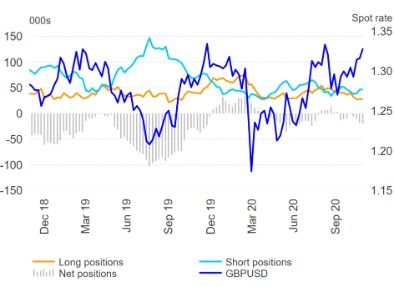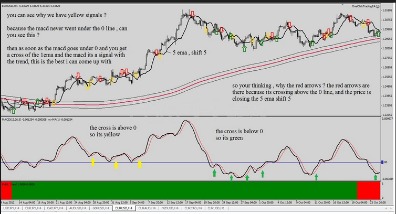Contents

Cup and handle patterns seen in bear markets are generally not as reliable. Shares and stock indices with lots of upward momentum prior to the cup and handle forming tend to produce the most favourable cup and handle patterns for trading. In this case, traders may focus on stocks or indexes that saw strong percentage advances heading into the cup and handle pattern. The cup and handle pattern is a trading pattern that can be analysed in all financial markets. The cup and handle formation is created when the price of an asset falls but then makes its way back up to the point where the fall started. Cup and handle patterns are found on all timeframes, from intraday charts up to weekly and monthly charts.

The first step is to identify an uptrend and a rounded retracement into that bullish trend. That rounded bottom is the first component you need to see. The handle has to be smaller than the cup and should only indicate a slight downward trend within the trading range – not one that goes lower than one-third of the way into the cup. Investors who see a similar pattern where the handle goes deeper might want to make efforts to avoid it.
Big caps sometimes can break out successfully with smaller volume surges. A chart pattern is a graphical presentation of price movement by using a series of trend lines or curves. Chart patterns can be described as a natural phenomenon of fluctuations in the price of a… Finally, you can use a buy-stop trade to take advantage of a bullish trend. This is a situation where you place a buy-stop order above the resistance. In this case, a bullish trade will be opened after the price rises above the resistance level.
A V-bottom, where the price drops and then sharply rallies, may also form a cup. Some traders like these types of cups, while others avoid them. Those that like them see the V-bottom as a sharp reversal of the downtrend, which shows buyers stepped in aggressively on the right side of the pattern. A good time to buy is when the price of the asset moves up and exceeds the price levels seen previously at the top of the right side of the cup.
Share this:
The cup and handle pattern is a bullish continuation pattern triggered by consolidation after a strong upward trend. The pattern takes some time to develop, but is relatively straightforward to recognize and trade on once it forms. As with all chart patterns, trading volume and additional indicators should be used to confirm a breakout and continuation of the original bullish price movement. It is a bullish continuation pattern which means that it is usually indicative of an increase in price once the pattern is complete. When a stock forming this pattern reaches old highs, it experiences selling pressure from investors who bought at those levels previously. Selling pressure will probably make price consolidate with a tendency toward a downtrend trend for a period of three days to five weeks, before going higher.
The breakout should produce significant volume and price expansion. Any who, as the price approaches the creek or top of resistance, the stock will have a minor pullback, thus creating the handle. Once this pullback or handle is complete, we are off to the races.
At this point investors expect it to remain stable for a period of time before resuming its previous growth. This means that the handle of a cup and handle is considered a strong indication that the stock is poised for growth. A cup-and-handle pattern can take place over any period of time.
The price target following the breakout can be estimated by measuring the distance from the right top of the cup to the bottom of the cup and adding that number to the buy point. Let’s get a little bit deeper into what Cup and Handle is, and how to make money trading with the profitable cup and handle trading strategy. However, when the handle is of proper proportions to the side of the cup, a breakout that goes higher than the handle is an indication of a rise in price. Furthermore, it is essential to note that this isn’t always the case, and investors should use some measures to mitigate losses when putting money into these types of patterns.
You may go short at the close of the breakdown candlestick, or you place a stop sell order slightly below that lower trend line. It might be wise to wait for a break below the support line established by the lows of the inverted cup. Volume should decrease during the formation of the pattern, but there should be a spike when the breakout/breakdown happens after the handle formation.
- A stock’s price will dip while it is in the handle, but in a true cup-and-handle pattern this dip will not endure.
- This is followed by a time where the price remains quite stable.
- An inverse cup and handle pattern is the exact opposite of what we have talked about.
- This is a powerful chart pattern that’s used by stock traders to capture explosive breakout moves — where the stock price could increase 1000+% within a few years.
- Check out this step-by-step guide to learn how to find the best opportunities every single day.
As more bears come, the price moves lower to a certain point. Bulls then start coming in and take the price to the previous high.Bears come in again and push the price lower. The point is simply to find stocks that are performing better than average , and eliminate stocks from the list that aren’t strong. This scan is one way to do it, but really any method that finds stocks that are stronger than average is fine.
How to Trade the Cup and Handle Pattern
Price breaks above the consolidation to trigger a long trade. Price moves up again and forms a consolidation in the middle to upper portion of the triangle . If the consolidation is taking up most of the triangle, which is now quite narrow, that is also fine. The consolidation can also form just above the top line of your triangle.
It is seen as a bullish continuation pattern, due to this, it is essential to identify a prior uptrend. Traders can do this by making use of price action techniques or other technical indicators like the moving average. A cup and handle chart may indicate either a continuation pattern or a reversal pattern. A reversal pattern can be seen when the price is in a long-term downtrend, then forms a cup and handle that reverses the trend as the price begins to rise. A continuation pattern on the other hand occurs when there’s an uptrend; the price rises and forms a cup and handle, and then continues to rise.
This resistance happens at the level where the price reached and started falling. The cup and handle pattern is part of the so-called continuation patterns. Other such patterns are the ascending and descending triangle pattern and bullish and bearish flags and pennants.
An upward-sloping handle is flawed; it represents weak demand as new buyers move into the stock at a trickling pace. During the stock’s actual breakout, you want to see a new wave of buyers coming in at a torrid pace, not a trickling one. The handle should form in the upper part of the entire pattern.
Larry Connors’ %b Strategy (Bollinger Band) | Trading Strategies
A https://forex-trend.net/ and handle is seen as a bullish continuation pattern and it tells traders the right opportunities to buy. The cup and handle pattern was made popular by William O’Neil, which now has expanded into all sorts of trading scenarios. Traders have come to know the cup and handle as a bullish continuation pattern that is a highly accurate predictor of sizable breakouts. To learn more about stock chart patterns and how to take advantage of technical analysis to the fullest, be sure to check out our entire library of predictable chart patterns. These include comprehensive descriptions and images so that you can recognize important chart patterns scenarios and become a better trader.
To get the best out of the pattern, you may have to combine it with other technical analysis tools. For cup and handle continuation, look to trade with the trend, especially if the trend is strong. To measure the target price, take the maximum height of the cup, and project that distance from the breakout point. That small pause gives us a good low risk opportunity to get into the trade to ride the next wave of uptrend.
Well guess what folks, sometimes it’s not always sunny outside. Follow this step-by-step guide to learn how to scan for hot stocks on the move. The buy point occurs when the stock breaks out or moves upward through the old point of resistance .

This selling pressure creates a hard environment to gain traction after a cup and handle breaks out to the upside. One common mistake that traders make when trying to trade the cup and handle pattern is buying too early before the handle has formed. Remember, the handle should ideally form no more than 15% below the left high of the cup. If it forms any lower than this, it may be a sign that the stock is not ready to break out and move higher.
A https://en.forexbrokerslist.site/ and Handle pattern is a pattern of price movement on the trading chart that resembles a cup with a handle, from where it derives its name. The cup section of the pattern is formed by a u-shaped price movement, while the handle is a short price channel from the edge of the cup. The handle is actually a pullback after the right swing of the cup. This includes drawing trendlines for the handles to highlight the breakout points, notes to mark important areas, or arrows to highlight potential entry and exit points. We also offer a chart scanner with pattern recognition software that works automatically to detect and highlight trends for your ease of trading. Above is an example of two cup and handles that formed in the Big Tech share basket on our Next Generation trading platform.
Since the https://topforexnews.org/ must occur within the upper half of the cup, a properly placed stop-loss should not end up in the lower half of the cup formation. The stop-loss should be above $49.75 because that is the halfway point of the cup. For example, if a cup forms between $99 and $100, the handle should form between $100 and $99.50, ideally between $100 and $99.65. If the handle dives too deep and erases most of the gains of the cup, you should avoid trading the pattern.
b) Cup and Handle Continuation Pattern
First, approximately one to three months before the “cup” pattern begins, a security will reach a new high in an uptrend. Second, the security will retrace, dropping no more than 50% of the previous high creating a rounding bottom. Third, the security will rebound to its previous high, but subsequently decline, forming the “handle” part of the formation. Finally, the security breaks out again, surpassing its highs that are equal to the depth of the cup’s low point. Cup and handle patterns form as the result of consolidation after an uptrending stock tests its previous highs. At that level, traders who bought the stock near the previous highs are likely to sell, causing a gentle pullback.


No responses yet